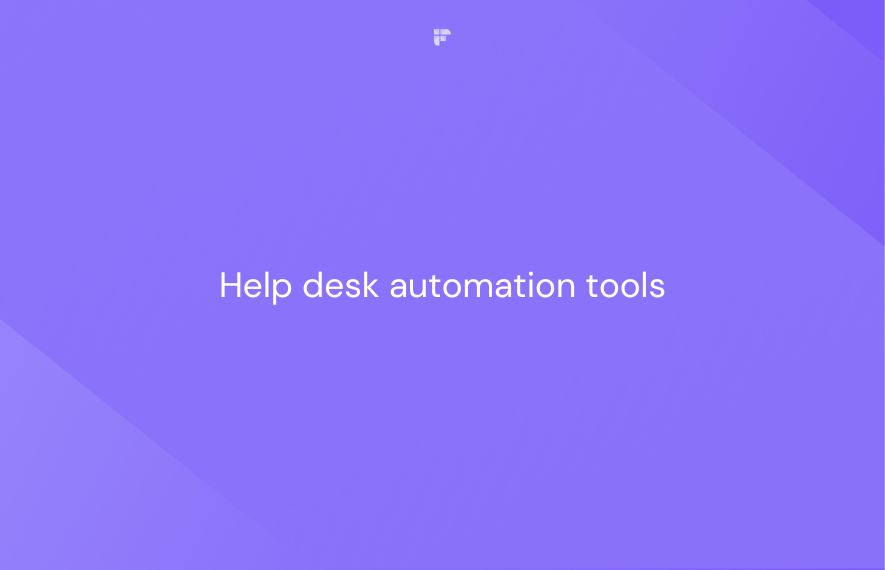In businesses today, the two main concerns of SaaS vendors looking to ramp customer acquisition are:
1) How do I get my product in front of my ideal customers?
2) How do I identify those ideal customers in the first place?
The answer lies in giving equal precedence to Customer development and Customer success.
Combining customer development and customer success provides high-caliber guidance to your most valuable customers – without disrupting your Sales and Support teams.
If your customer success management is largely focused on providing training, answering customer emails, driving feature adoption, and responding to risk, it is probably less focused on driving growth. In other words, they're only focused on filling product gaps.
Imagine a world where your customer success management isn't focused on filling gaps in the product. Instead, it builds success plans, aligns with stakeholders, accelerates expansion, and drives advocacy. This world only exists when customer development and customer success are aligned on how to scale.
Still not convinced? Let’s put it like this-
If customer development is the appetizer in a 3-course meal, the CS team is the dessert.
Efficient customer development relies on creating meaningful relationships, and customer success teams enhance that journey by driving growth.
What is Customer Development?
Customer development is a scientific way of approaching a business where you build a product by remembering the problem statement (the problem you’re solving ) of your product, and closely aligning it with the way your brand engages with its customers. It is ideally the middle step of the process preceded by Business Model Design and followed by Agile Engineering.
The Customer Development framework was developed by Steve Blank as part of the Lean Startup methodology. The framework helps businesses discover and validate the customer needs that they have identified.
In other words, customer development is a four-step framework that helps with:
- Discovering and validating what you have identified as your customers’ need(s)
- Building the right product to satisfy that customer’s need(s)
- Testing the correct methods for acquiring and converting customers
- Deploying the right resources in the organization to meet the demand for the product.
Using the customer development framework, teams can work with a template that helps determine whether they are headed in the right direction, or delivering the right thing.
While many teams know about customer development, the most common pitfall is that they do not use it. Instead, they fall in love with their product (the solution they built with good intention and passion nonetheless), without understanding which, if any, needs the product actually satisfies.
This could result in a product without a market or an untapped customer base that’s potentially valuable to the product’s growth. At the end of the day, there’s no more important question to answer than “will people buy this?”
What is Customer Success?
As businesses grow, the markets get overcrowded with product options, and in recent years it’s become more expensive for businesses to acquire new customers that stay loyal to the brand. That’s why it’s important to keep existing customers happy, and that’s where customer success comes in.
Customer Success is the business capacity to anticipate customer challenges or questions and be proactive about providing answers and solutions. CS teams help boost customer happiness and retention for your product, increasing customer loyalty and thus, revenue.
Customer success teams, unlike sales or marketing teams, focus on working in partnership with customers throughout their buying journey to help them gain the most value out of their purchase. They help make this experience a positive one, ensuring a successful and reliable brand image for the future.
Customer success feeds business success, and some of the most successful and growing companies today are already investing in CS teams. In a survey, Hubspot found that growing companies are 21% more likely than their stagnant counterparts to prioritize customer success.
Probably the driving factor behind the fast adoption of customer success and customer development is that forward-looking businesses understand the most cost-effective way to grow a product is to ensure customers are happy and successful, which comes from the direct efforts of CS teams.
How To Use Customer Development and Customer Success for Business
1. Identify The Customer's End Goal
The first step is to identify why the customers are buying or will want to buy your product.
For example, you probably wouldn't buy sunscreen if you lived in a place where it rained all day, every day. However, if you live in sunny California and love to go out and surf with your friends on weekends, you probably really need a sunscreen that works.
In other words, every customer has an end goal in mind when he or she is buying a product and expects it to solve their problem. Hence, it is crucial that you choose your customer base carefully, identifying all the different scenarios where your product solution could potentially fit.
One place to start is to identify the customers who would be the best fit for your customer service program. If you want to work on optimizing your chances of success, ensure that you're targeting the most ideal candidates.
A good way to begin determining that is by conducting a customer behavior analysis to highlight these high-value individuals. You can also analyze metrics like social media mentions, and product usage reports.
2. Build A Customer Success Team
To retain customers is to show them that you take their success seriously. The simplest way to do that? Invest in a customer success team that has customer development as its foundation.
Without a CS team, there’s a chance that your new offerings will be perceived more as suggestions rather than trusted steps to success. Whereas when you have a dedicated team working towards helping customers reach their goals, trust builds over time, and your customers will be more likely to purchase additional products because they trust your suggestions will benefit them.

3. Get The Right Tools
The first decision you need to make before you begin building a strategy is to determine whether your program is going to be manual or automated. While there are pros and cons to both, a manual customer success program needs an entire plan to be built and then executed at your own pace and rhythm.
Automated solutions on the other hand are software that can help manage your customer success efforts, as well as make it easier to measure its impact. They provide features like customer status reports and automatic alerts, so you can keep track of every customer's progress.
4. Develop A Roadmap For Success
Outlining a customer’s journey and identifying the opportunities where your business can make an impact is crucial to a CS program.
Before you start creating an ambitious CS roadmap, take two steps back and refer again to the challenges you have faced in your previous milestones. If you have a customer journey map, you can refer to it as well.
Next, think about the actions your company can take to ensure customer success at points of friction, or roadblocks. Here are a few things to consider to get you started:
- What would benefit the customer most at each step?
- At what point could your competitors influence your customers?
- What's the desired outcome at each step in the customer's journey?
- How will you track customers who are unhappy with their progress in the customer journey?
- At what step(s) is your product or service falling short?
While you think of answers to these, also think about how your team will communicate with the customers. For example, you may assign one person per account, or rotate the accounts across one team.
Moreover, it’s essential to consider the timing and channel that you’ll be using to communicate. The idea is to make each effort count for the customer, so the right place and right time adage becomes relevant here.
5. Establish Your Metrics
Once you have a strategy ready, the next step is to think about how you’ll measure customer success for your efforts. Because customer success is a relationship that benefits both parties, including metrics that measure the success of both the company and the customer.
For example, if you want to measure the financial impact on the company, the customer success metrics you could include are; customer lifetime value and customer acquisition cost.
If you want to analyze the impact on your customer on the other hand, look at data like NPS, churn rate, social media buzz, etc. Through the combination of the two, you should get a clear idea if both parties are benefiting from your customer success team efforts.
6. Make Changes One At A Time
While it’s exciting to watch your customer success program being set up, don’t fall into the temptation of letting all your changes loose at once. Be patient in your approach in order to minimize the chances of increasing churn.
Making a lot of changes at once doesn’t benefit the customers either, and can actually be overwhelming for them, even if your intention is to benefit them. Implementing a lot of changes also makes it more difficult to measure the success of each strategy.
Taking small and gradual steps allows for a smoother transition, giving you a better idea of what’s working and what needs more work. Doing this ensures a more consistent growth, versus a steep rise followed by a steep drop.
Last 2 Cents
With millions of businesses competing for customers online, it’s hard to stand out and attract new customers.
Customer development methodology along with customer success teams open new doors for businesses to make a place for themselves while building meaningful relationships with their consumers along with increasing their revenue.
If you haven’t yet, start the conversation with the c-suite about considering a CS program, and remember - like all things good, stuff takes time to happen and show desired results. Remember to evolve your CS program at your own pace, and a good place to begin is to start today.







